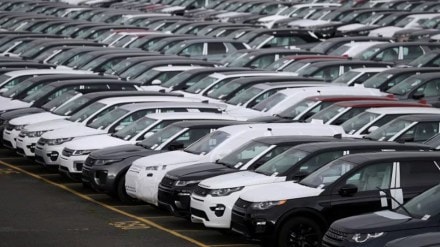US President Donald Trump’s decision to impose a 25% tariff on imported cars and auto parts, effective April 3, certainly comes as a blow to the Indian component makers. With exports to the US reaching around $6 billion in FY24, accounting for 27% of the country’s total auto component exports, the tariff hike threatens to disrupt revenues and impact margins for firms like Sona BLW Precision Forgings and Bharat Forge, which derive 43% and 38% of their earnings from the US, respectively. In comparison, passenger vehicle manufacturers, barring Tata Motors’ subsidiary Jaguar Land Rover, remain unaffected, as India’s exports of fully built vehicles to the US are negligible. However, amid the adversity, there’s also an opportunity for Indian component makers to pivot strategically, particularly vis-a-vis China.
Firstly, it’s the right time for them to diversify beyond the US. Companies like Sona BLW are already targeting markets such as China, Japan, and South Korea, aiming for these regions to account for over 50% of revenue in five years. Further, Samvardhana Motherson International, which has a plant in Alabama, will be able to sidestep the tariffs to an extent, by supplying US automakers locally. Secondly and more importantly, the US’ move provides the opportunity to score over China, which faces a heftier tariff burden, potentially 35% or more, combining the new 25% levy with existing duties. With China exporting $10.1 billion in auto parts to the US in FY24, its steeper cost hike could lead American buyers toward suppliers in other countries, including India.
This relative advantage isn’t hypothetical. Trump’s “America First” policy aims to bolster domestic manufacturing, but the US imports around 50% of its vehicles, and of the rest, only 40-50% of content is domestically sourced. Rebuilding that capacity is a costly, years-long endeavour, leaving a gap that Indian component makers could gain advantage of. If US automakers find Chinese parts prohibitively expensive and domestic options insufficient, India’s established players could gain ground. However, this is totally linked to execution. India lacks China’s scale and cost efficiencies, and the 25% tariff still dents its price advantage. So, strategic agility will be key.
There’s another aspect which may come into play over a longer term as the US may find the tariffs untenable. With half its vehicle supply reliant on imports and limited domestic content, higher costs could lead to consumer backlash or strain automakers dependent on global parts. Tesla seems to be the immediate winner. Since it produces all its US-market vehicles in California and Texas, the company will be able to sidestep the tariff on completely built units, potentially boosting demand as imports grow costlier. However, its reliance on imported batteries and semiconductors, which will be subject to the 25% duty, could raise production costs, neutralising the gains unless it adjusts pricing or sourcing. Other automakers might follow Tesla’s lead, shifting production to the US, but that will be a time-consuming process, thus bringing near-term opportunities for Indian component makers.
However, at a macro level, India’s high tariffs on US goods could invite broader retaliation beyond auto parts, complicating the trade relationship. If the US expands tariffs to other Indian sectors like pharmaceuticals or electronics, any advantage in auto parts could be offset. China, despite its higher tariffs, has a more robust export economy to absorb such shocks, whereas India’s smaller global trade footprint makes it more vulnerable to a tit-for-tat escalation.
